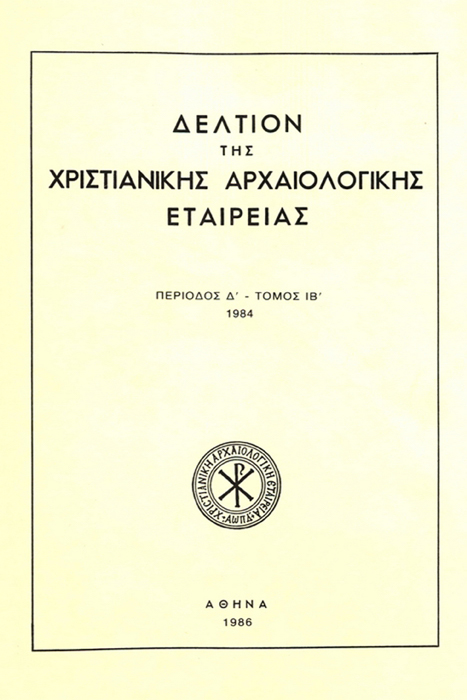Serlian manifestations in cretan monasteries (pl. 85-90)
Abstract
1. The monastery of the Holy Trinity, near Canea. The long, three storied, western façade of the lovely setting of this Greek orthodox convent of Crete (near the airport of Canea) is separated into two equal parts by an axis of symmetry most emphasized by a magnificent staircase as well a brilliant mannerist arched portal, corresponding to an inner barrel-vaulted gallery. (Plates 85 and 88). The portal, erected in 1634, as a greek inscription over the central arch quite clearly indicates, is —without any doubt— an outstanding and exact replica of the Porta XV of Sebastiano Serlio's famous throughout all Europe «Libro estraordinario », first published in 1551. (Plates 86 and 87). On the other hand, a special architectural solution given by Serlio in his seventh book (Frankfurt, 1575) under the title of a «propositione quintadecima per fabricare in costa» may, probably, be traced from the same long enough building, which frames the almost rectangular perimeter of the Cretan monastery to the West. 2. The monastery of Arkâdi, near Rethymnon. The three bays elevation of a christian basilica given by Sebastiano in his fourth book on architecture (Venice, 1537) deeply inspired the unknown Cretan master when he erected in 1587 the main (i.e. the western) façade of the church of the wide known in Greece (after the Cretan revolution of 1866) great orthodox monastery of Arkâdi. The church was divided into two aisles and was covered by two parallel, pointed vaults. Serlio's «inventione», which should be used « . . . ogn' hora che l’ Architetto vorrà edificar un tempio sacro... », as Serlio explains, accompanied by some alternations (e. g. Sebastiano's side windows have been replaced by side doors, etc.) and some other additional elements, remained the base of the whole synthesis. (Plate 90). As it has hopefully been shown both examples of orthodox monasteries clearly testify the penetration of Serlio in the Cretan architecture of late 16th and early 17th centuries and both follow other earlier and equally significant discoveries of undoubted Palladian (Fontana Antonio Priuli at Irâklion) and Serlian (Portal of S. Maria at Rethymnon) manifestations in Crete (c f. Jordan Dimacopoulos : Mannerist portal at Rethymnon after a drawing by Sebastiano Serlio, in Athens Annals of Archaeology, V, fase. I, Athens, April 1972, p. 108-112).
Article Details
- How to Cite
-
ΔΗΜΑΚΟΠΟΥΛΟΣ Ι. E. (1972). Serlian manifestations in cretan monasteries (pl. 85-90). Deltion of the Christian Archaeological Society, 6, 233–245. https://doi.org/10.12681/dchae.817
- Section
- Articles
The copyright for articles in the journal Deltion of the Christian Archaeological Society (henceforth Deltion) is retained by the author(s), with first publication rights granted to the journal and to EIE/ EKT the right to store and communicate these articles to the public via its information infrastructures. By virtue of their appearance in this journal, articles are free to use with proper attribution for non-commercial uses under a ShareAlike obligation. The Christian Archaeological Society and EIE/EKT retain the worldwide right to reproduce, display, distribute, and use articles published in the Deltion in all formats and media, either separately or as part of collective works for the full term of copyright. This includes but is not limited to the right to publish articles in an issue of the Journal, copy and distribute individual reprints of the articles, authorize reproduction of articles in their entirety in another publication of the Christian Archaeological Society, and authorize reproduction and distribution of articles or abstracts thereof by means of computerized retrieval systems.






